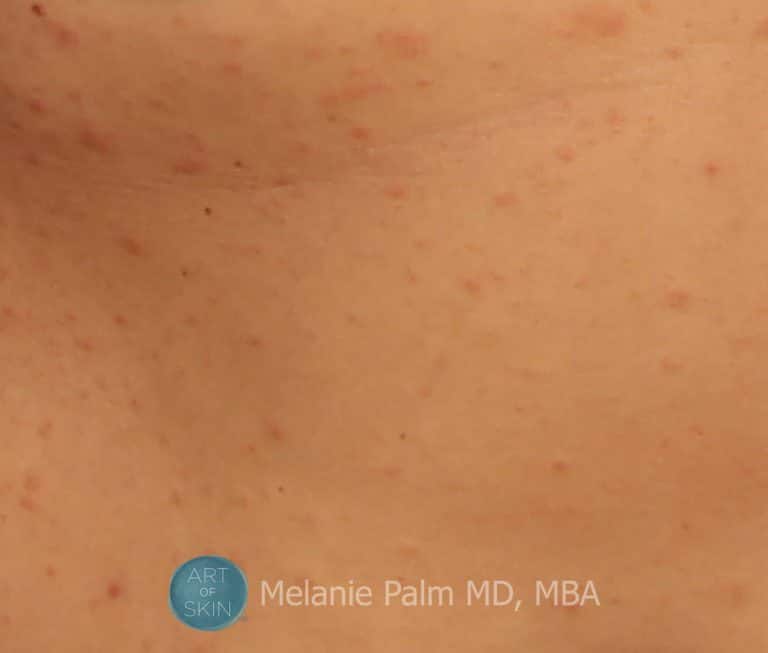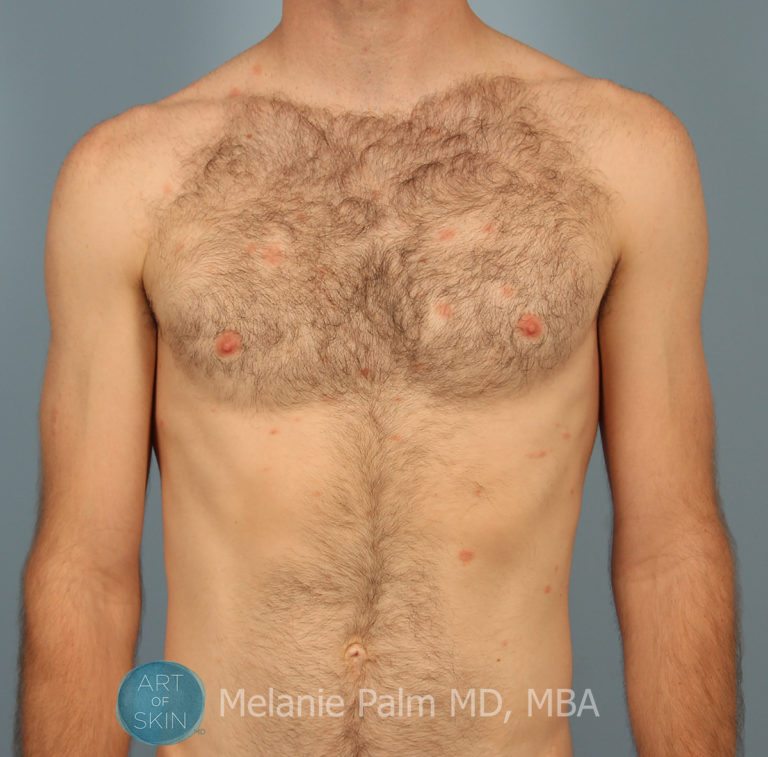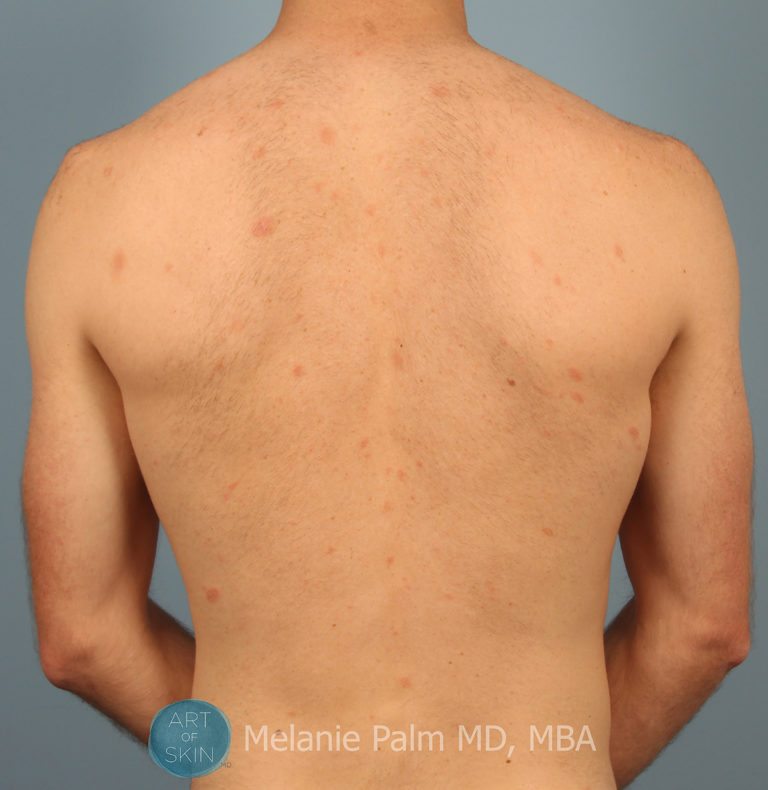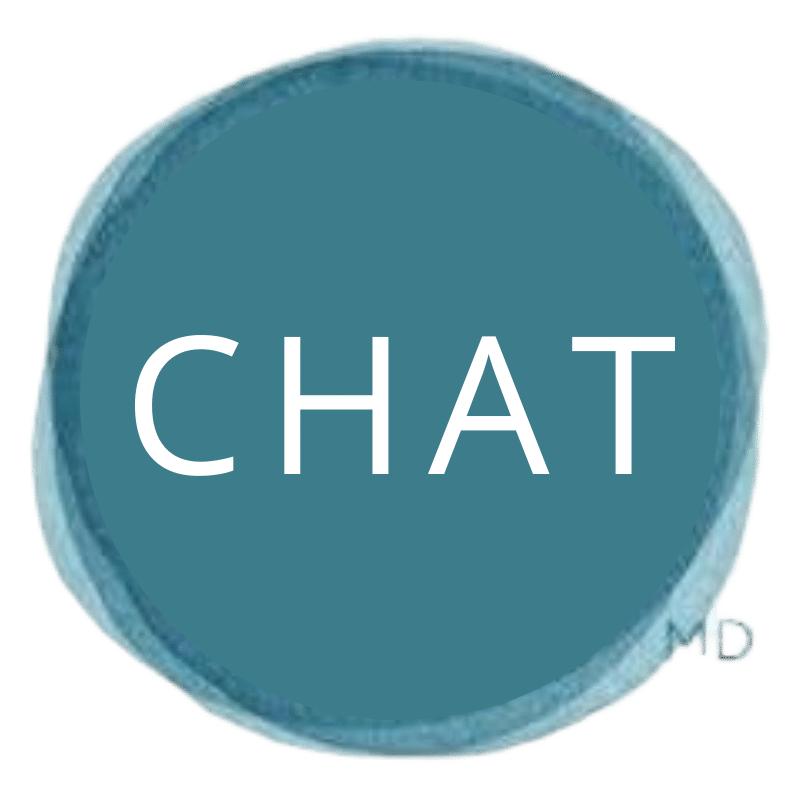Pityriasis Rosea Treatment
Advanced Treatment for Skin Rashes in the San Diego Area
Dr. Melanie Palm is a nationally recognized dermatologist and expert in the treatment of cosmetic and medical skin conditions. Dr. Palm is a noted leader in her field and offers effective treatment options for skin rashes. Her offices are located in Solana Beach, CA just north of San Diego.
What is Pityriasis Rosea?
Pityriasis rosea (PR) is considered a relatively common and benign skin rash thought to be caused by a viral infection. It is characterized by a single oval spot, usually on the trunk, followed by a more diffuse outbreak of the rash that occurs 1-2 weeks later. Pityriasis rosea often affects a younger population, typically those 10 to 35 years of age. There is an equal distribution of PR cases between men and women.
There is less than a 1% incidence of pityriasis rosea in the general population. PR seems to occur seasonably with more cases of pityriasis rosea being diagnosed during Spring.
Although the rash of PR is characteristic, PR may be confused with other skin conditions including guttate psoriasis, eczema, contact dermatitis, and tinea corporis (ringworm). It is important to distinguish this PR from secondary syphilis, which may be similar in appearance but requires appropriate diagnosis and a much different approach to treatment.
What are the Symptoms of Pityriasis Rosea?
Pityriasis Rosea can have a variety of symptoms with a relatively characteristic rash. Some features of PR include the following signs and symptoms:
- Herald Patch or Mother Patch: This is the initial presentation of PR. A single, round, salmon-colored patch with peripheral flaking called a “herald patch” or “mother patch” appears first, most typically on the trunk
- Christmas Tree pattern rash: About 1-2 weeks after the herald patch appears, many similar, smaller patches erupt, typically over the trunk. They typically appear on the chest first, and then spread across the trunk over skin tension lines or “dermatomes.” This forms a Christmas tree-like pattern across the back.
- Inverse pattern rash: less than 10% of pityriasis rosea cases exhibit an inverse pattern, meaning the rash appears in skin folds such as the armpits or groin.
- Burning & Itching: about 25% of patients with pityriasis rosea will have mild to severe symptoms associated with the rash. This most often involves burning, itching, tingling, or sensitivity in the areas of the PR rash.
- Flu-like symptoms: It is estimated that about 10% of patients with PR experience a prodromal illness – a virus like cold or flu prior to the skin outbreak. Some sources have stated as many as 69% of patients have a viral illness prior to PR. Symptoms often include nausea, fatigue, lethargy, headache, body aches, and fever.
What Causes Pityriasis Rosea?
It is suspected that pityriasis rosea is likely caused by a viral infection, although no virus has been definitely linked to the condition. Reactivation of human herpes virus 6 and 7 have been suggested as possible causes of PR. During childhood, these viruses cause roseola.
What are the Treatment Options for Pityriasis Rosea?
It is important to have a board-certified dermatologist evaluate a rash presenting as pityriasis rosea to provide supportive treatment and rule out other possible conditions that may have more serious consequences.
Treatment of pityriasis rosea is largely supportive. In some patients, the rash can be extremely itchy or painful requiring treatment. Topical steroids or topical calcineurin inhibitors may help with these symptoms, as may oral antihistamines such as diphenhydramine (Benadryl) or cetirizine (Zyrtec).
PR is one of the few times that a dermatologist may recommend light therapy for the skin, as some patients benefit from narrow-band UVB treatment or brief natural sunlight exposure (non-burning) in lessening the discomfort associated with pityriasis rosea. UV light therapy appears to be the most effective if used during the first week of the rash.
Other debated treatment options in severe cases are erythromycin and acyclovir. Erythromycin was shown to be effective in lessening PR in one study, but this evidence has been disputed and unable to be repeated. If there is a relationship between pityriasis rosea and human herpes virus 6 or 7, an oral antiviral medication such as acyclovir may shorten the duration of PR symptoms.
PR is unlikely to recur. It is estimated that only 2% of patients with pityriasis rosea have a second outbreak of the rash.
If you are looking for a dermatologist to treat pityriasis rosea in the San Diego area, call Dr. Melanie Palm at 858.792.SKIN (7546) to schedule an appointment to discuss your treatment options.





